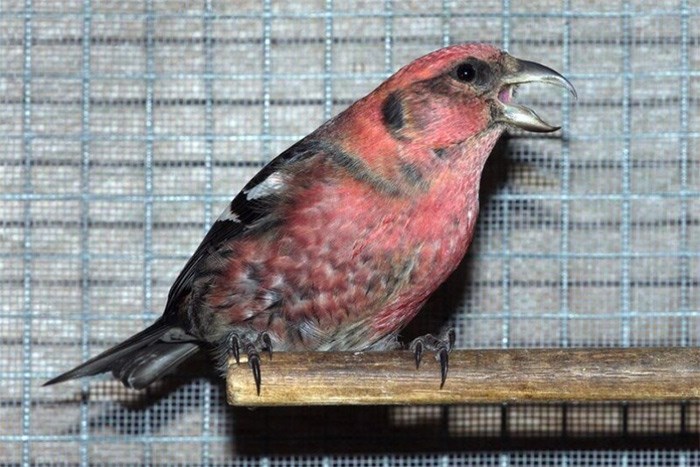 The Wildlife Rescue Association of B.C. treated and released a white-winged crossbill this fall. It was found injured in Coquitlam although it’s typically found in the Interior. Photo courtesy of the Wildlife Rescue Association of B.C.
The Wildlife Rescue Association of B.C. treated and released a white-winged crossbill this fall. It was found injured in Coquitlam although it’s typically found in the Interior. Photo courtesy of the Wildlife Rescue Association of B.C.
A “huge leap” in the number of songbirds the Wildlife Rescue Association of B.C. has seen this fall has staff speculating that last summer’s wildfires might be to blame for a change in their migration habits.
Since August, the organization has taken in 664 songbirds, most of which have struck a window during migration. That compares to 399 in 2016, 491 in 2015 and 454 in 2014.
While it’s not uncommon to see a jump of between 40 and 50 birds between years, the association says an increase of more than 250 is abnormal.
The shift in bird activity has also included the appearance of rarer birds such as the white-winged crossbill — a redheaded finch with white spotting on its back and wings — which hasn’t been through its doors since 2007. The bird’s normal migration route has it go through the Interior and Alberta as it heads south for the winter. It was found injured in mid-Coquitlam, in between Coquitlam Centre and Port Moody, but it made a full recovery over about three weeks and has since been released.
Although the association stresses that one can’t confuse causality with correlation, the increase in bird activity, coupled with the appearance of a bird typically found in the Interior, has it wondering if wildfires may have forced many birds to the coast.
“It definitely seems like it. Obviously, we can’t say 100 per cent... but we do know our numbers have increased substantially,” said Janelle Stephenson, a biologist and manager of the wildlife hospital.
The Canadian Wildlife Service also monitors the migration of landbirds, such as songbirds, to help track populations throughout B.C. To do so, staff put little bands around the foot of birds to allow for individual identification when tracking.
Members of the service in the Chilcotin region, where wildfire activity was heavy this summer, have only been able to band around 1,000 birds, compared to the usual 1,800.
“That indicates that they’re missing 800 birds that they would normally band in that banding station,” Stephenson said. “If their numbers are down by almost half, that indicates that those [birds] had to go somewhere else.”
white-winged crossbill
White-winged crossbill. Photo courtesy of the Wildlife Rescue Association of B.C.
The rescue association, located in Burnaby, mainly deals with wildlife in the Lower Mainland.
During the fall, the majority of the 664 songbirds it took in came from �鶹��ýӳ��(38 per cent), followed by Burnaby (13 per cent), Surrey and North �鶹��ýӳ��(both came in at 10 per cent).
Most of their injuries stemmed from window strikes. The birds can fracture bones or suffer internal damage.
“They’ll have central nervous system damage, which is the main thing we see in them, so they’ll have head trauma like a concussion,” explained Stephenson.
Sometimes, after they hit a window, they’ll get picked up by a cat and, as a result, take longer to recover because they’ll have punctures and lacerations. They may also have to grow in feathers, which can take time.
“They’re more likely to make it if the concussion is not too severe or the fracture is limited to one or two bones. If it’s more than one or two bones, it’s obviously a really long recovery,” said Stephenson, who noted that the rescue association has a high recovery and release rate for a rehab centre.
She recommends residents who find an injured bird put it in a box and let it sit for about 20 minutes. If it flies out of the box, that’s fine, if it doesn’t, it should be brought to the wildlife rescue centre where it will get a full exam and appropriate treatment, including veterinary care, a natural diet and a natural environment to recover in that reduces stress.
But Stephenson also pointed to the importance of taking steps to prevent window strikes.
TIPS:
- move bird feeders, bird baths and plants away from the house
- put decals on windows
- close blinds when you’re not at home
- keep cats indoors
More information can be found at wildliferescue.ca. If you see animals in distress, call the wildlife helpline at 604-526-7275.
@naoibh


